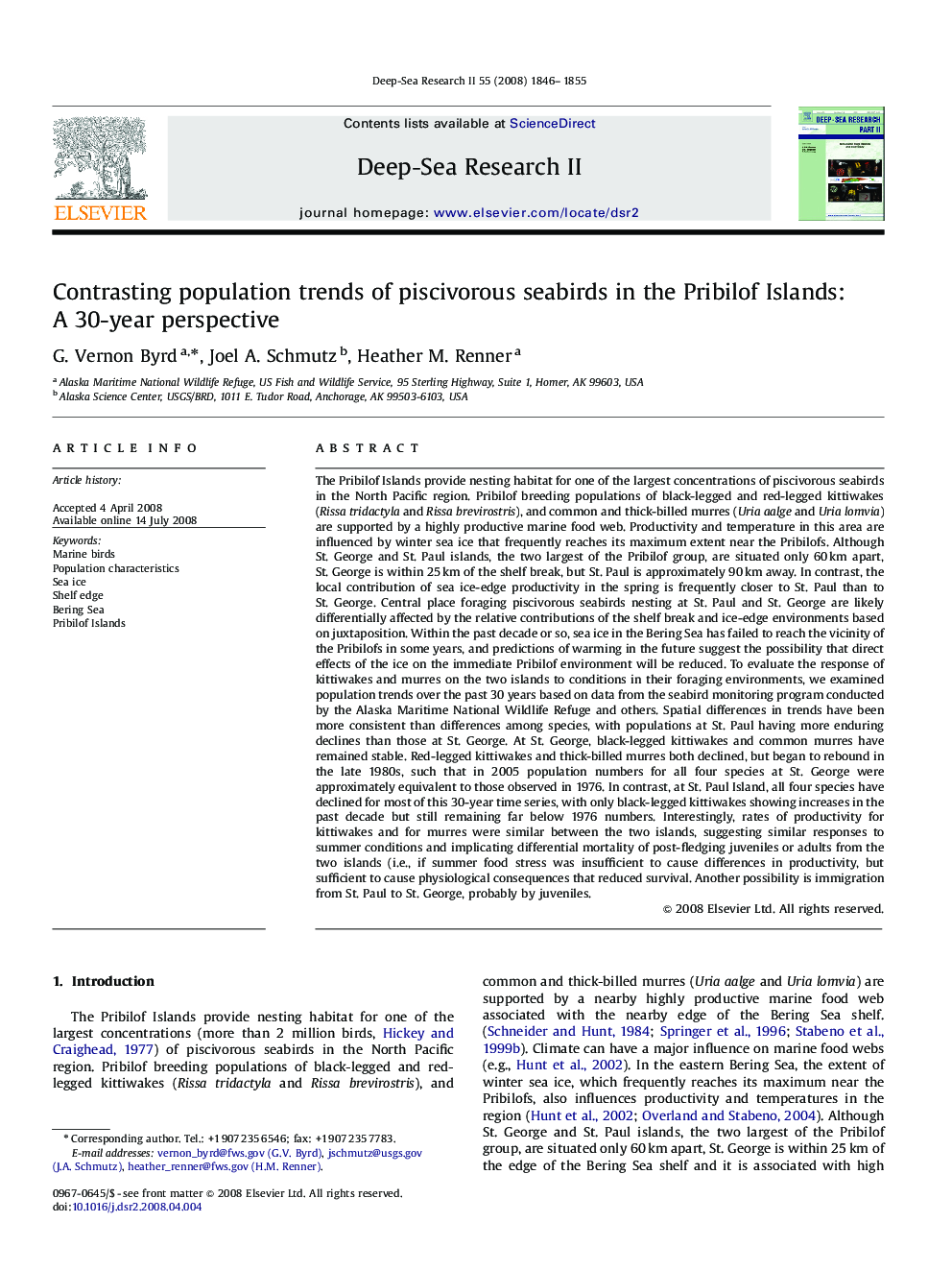| کد مقاله | کد نشریه | سال انتشار | مقاله انگلیسی | نسخه تمام متن |
|---|---|---|---|---|
| 4537397 | 1626493 | 2008 | 10 صفحه PDF | دانلود رایگان |

The Pribilof Islands provide nesting habitat for one of the largest concentrations of piscivorous seabirds in the North Pacific region. Pribilof breeding populations of black-legged and red-legged kittiwakes (Rissa tridactyla and Rissa brevirostris), and common and thick-billed murres (Uria aalge and Uria lomvia) are supported by a highly productive marine food web. Productivity and temperature in this area are influenced by winter sea ice that frequently reaches its maximum extent near the Pribilofs. Although St. George and St. Paul islands, the two largest of the Pribilof group, are situated only 60 km apart, St. George is within 25 km of the shelf break, but St. Paul is approximately 90 km away. In contrast, the local contribution of sea ice-edge productivity in the spring is frequently closer to St. Paul than to St. George. Central place foraging piscivorous seabirds nesting at St. Paul and St. George are likely differentially affected by the relative contributions of the shelf break and ice-edge environments based on juxtaposition. Within the past decade or so, sea ice in the Bering Sea has failed to reach the vicinity of the Pribilofs in some years, and predictions of warming in the future suggest the possibility that direct effects of the ice on the immediate Pribilof environment will be reduced. To evaluate the response of kittiwakes and murres on the two islands to conditions in their foraging environments, we examined population trends over the past 30 years based on data from the seabird monitoring program conducted by the Alaska Maritime National Wildlife Refuge and others. Spatial differences in trends have been more consistent than differences among species, with populations at St. Paul having more enduring declines than those at St. George. At St. George, black-legged kittiwakes and common murres have remained stable. Red-legged kittiwakes and thick-billed murres both declined, but began to rebound in the late 1980s, such that in 2005 population numbers for all four species at St. George were approximately equivalent to those observed in 1976. In contrast, at St. Paul Island, all four species have declined for most of this 30-year time series, with only black-legged kittiwakes showing increases in the past decade but still remaining far below 1976 numbers. Interestingly, rates of productivity for kittiwakes and for murres were similar between the two islands, suggesting similar responses to summer conditions and implicating differential mortality of post-fledging juveniles or adults from the two islands (i.e., if summer food stress was insufficient to cause differences in productivity, but sufficient to cause physiological consequences that reduced survival. Another possibility is immigration from St. Paul to St. George, probably by juveniles.
Journal: Deep Sea Research Part II: Topical Studies in Oceanography - Volume 55, Issues 16–17, August 2008, Pages 1846–1855